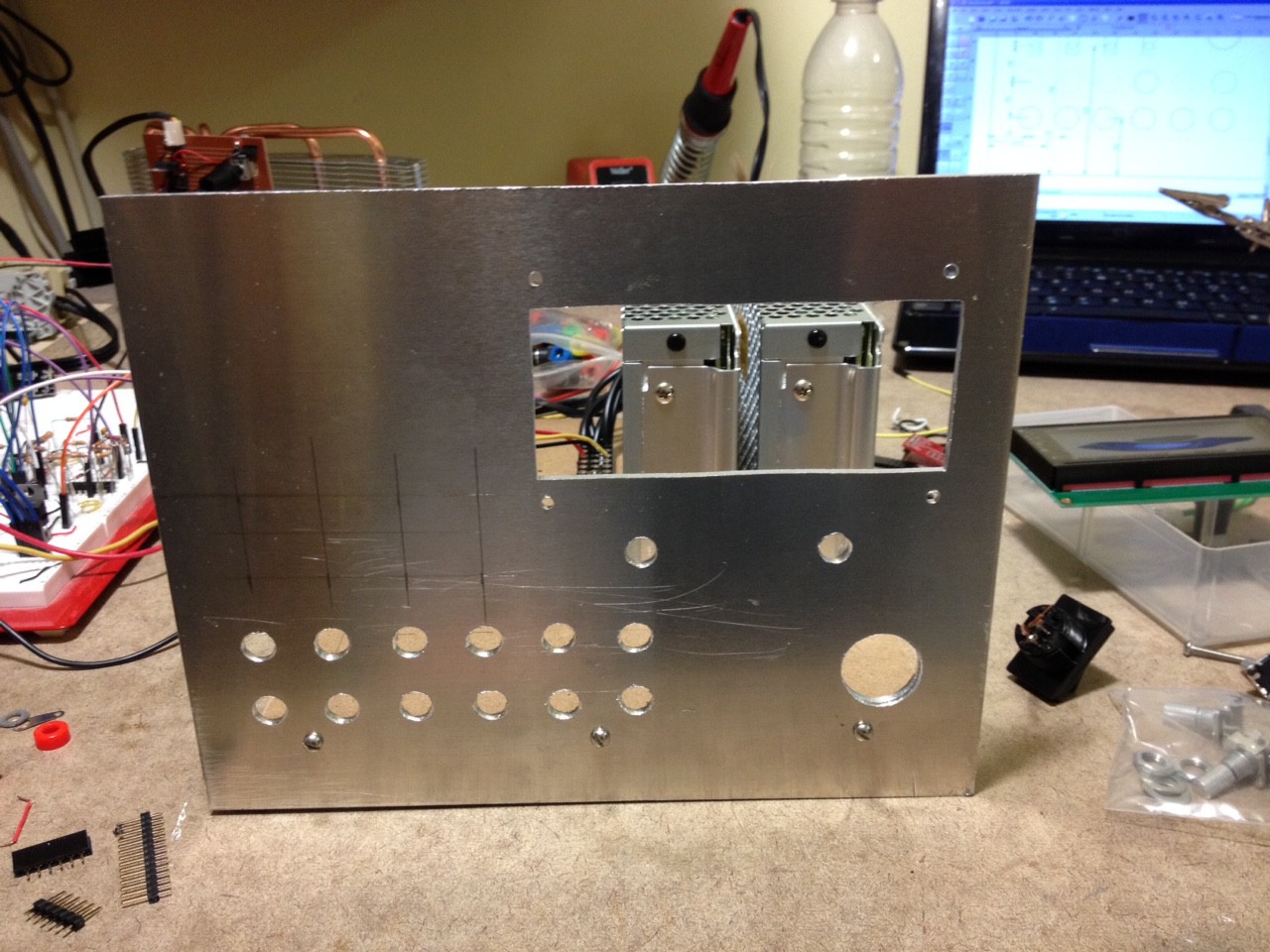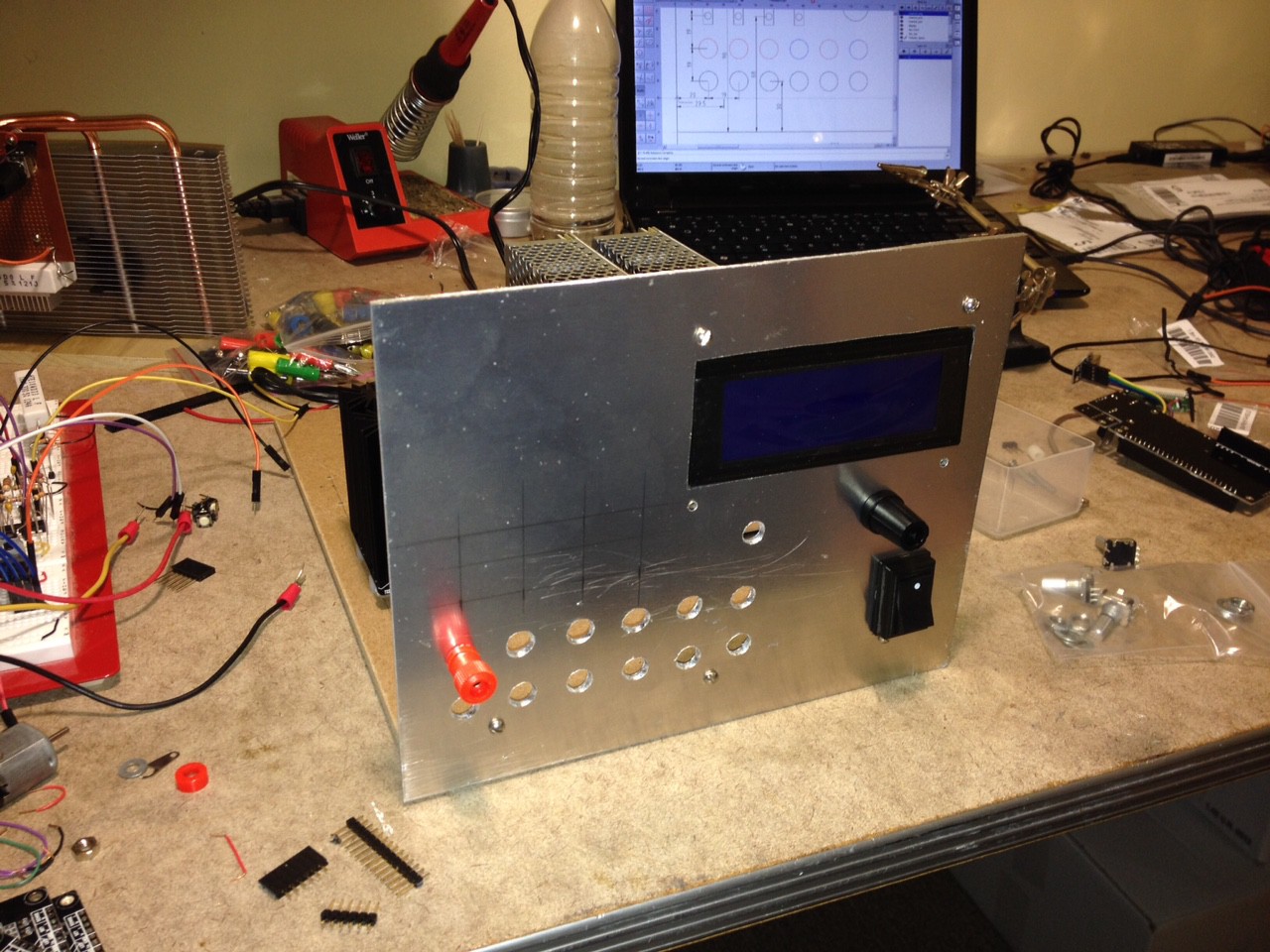Last night I cut out the front faceplate. The hole for the display was cut on the scroll saw, the rest were done with a drill. I have 12 holes left to drill out, but I didn't have the right size of drill bits, so I held off until later (I am planning on hitting the hardware store today).
After all the holes are drilled I need to sand the front to give it the 'brushed' look.
Next step is to do the same for the rear faceplate (I need a large circular hole for a fan, a smaller circle for the fuse holder, and a non-circular hole for the power plug). Once that is done, I can get the first channel completely wired up and ready for use with the controller. Yay!
Below is a preview of what it looks like now, and with a couple of the components in place.
 The Big One
The Big One

Discussions
Become a Hackaday.io Member
Create an account to leave a comment. Already have an account? Log In.
I have never tried to use a step drill in a hand drill because I have a drill press. I suppose you could use a hand drill (electric) but there are issues and you would need a steady hand. The issues are: The cutting edge is perpendicular to the guiding surface so you need a very steady hand to hold the bit perpendicular. A normal bit cuts at 45° to 60° so 50% or more of the energy is pulling the swarf away and 50% or less is trying to rotate the material, the cut angle of a step drill is 90% so they have much more force trying to rotate the material, you have to brace the material and not use your hands. If you use your hands and loose your grip then the edge of the material could slice your hand open especially with thin sheet metals. You may get away with holding 2mm - 3mm plastic if you use thick gloves. You may also get some centring drift.
There are some variations on ebay.
1) Some have three flat edges on the shank to better hold them in the chuck. The ones without this will free and spin on lager holes.
2) metric / imperial versions. The metric are harder to find.
3) Rotated steps. This slightly alters the cutting angle making the bit more suitable to thicker sheets of harder materials. I bought the straight steps as I only need it for plastic and aluminium.
I bought a 3 bit metric set and they are as follows -
1) (Largest) 4mm to 32mm in steps of 2mm with maximum material depth of about 4mm.
2) 4mm to 20mm in steps of 2mm with maximum material depth of about 4mm.
3) 4mm to 12mm in steps of 2mm with maximum material depth of about 6mm.
There are also variations of the hole size combinations in similar bits.
The short answer was probably - Drill presses are cheap. Less than $100. I have lots of tools that I use in the press that I wouldn't use in a hand electric drill because the results with a hand drill are just poor compared to the press. I can drill a 5mm hole through 6mm rod with the press. That would be impossible with a hand drill.
Are you sure? yes | no
yeah a drill press is on my list of tools to buy. I'm slowly accumulating a decent set of tools... Baby steps! :-
Are you sure? yes | no
like a step-drill manual... you should sell this to Harbor Freight or something...
Are you sure? yes | no
Step drills are the go for plastic and thin aluminium sheets. They're cheap from China but probably more expensive at the hardware store.
Are you sure? yes | no
Interesting, I had not heard of a step drill bit before. They look quite handy!
I have already purchased a set of drill bits over lunch hour, so I won't be getting a step drill bit this time, but I will keep it in mind for next time... perhaps if I need metric holes I can get a metric one instead of another drill bit set.
As far as use goes... while it looks like you can use them with a hand drill, I assume they are more useful on a drill press? Also do you know how thick material they can be used with? Or does the thickness depend on the individual drill bit, and how large each step is?
Cheers
Are you sure? yes | no